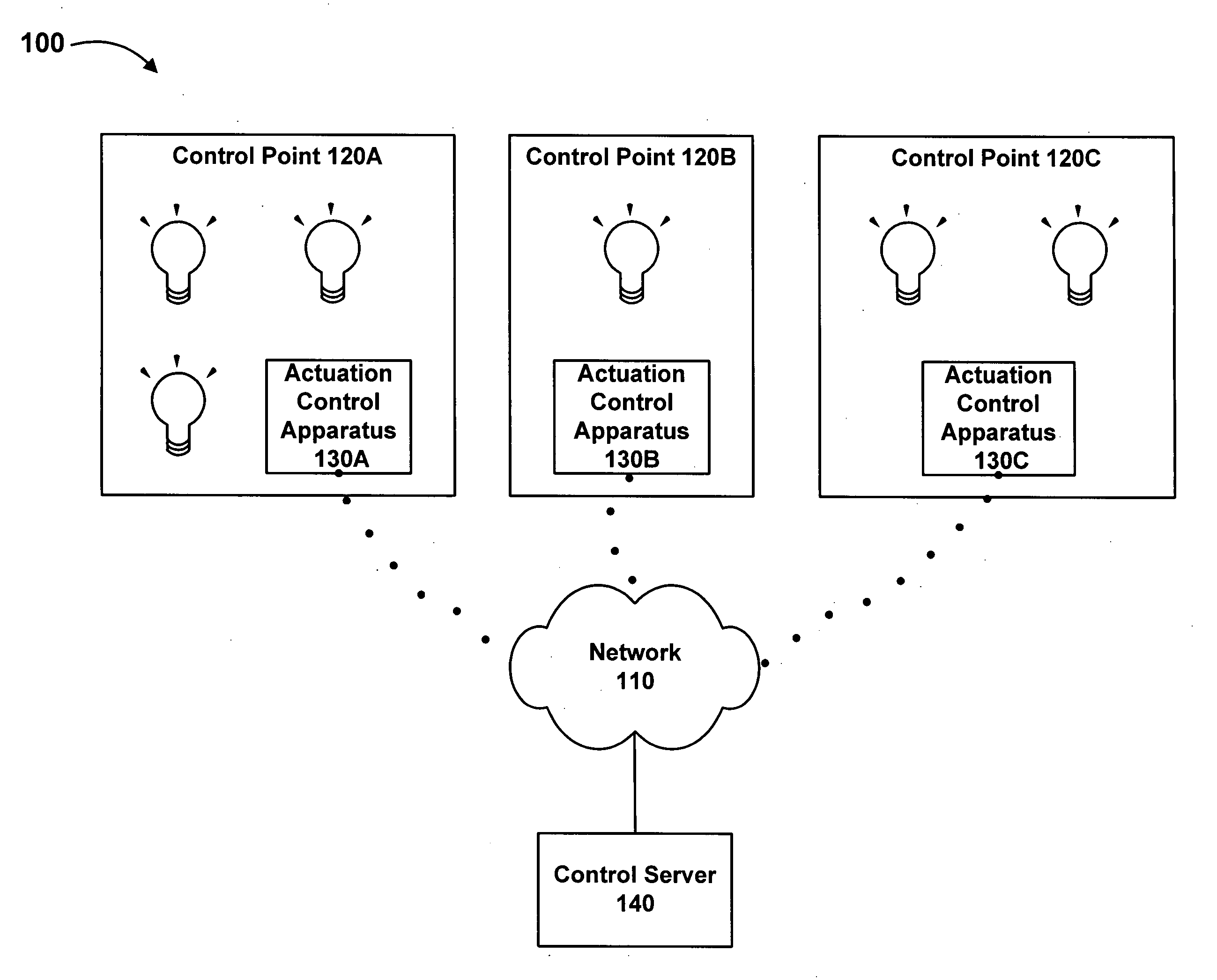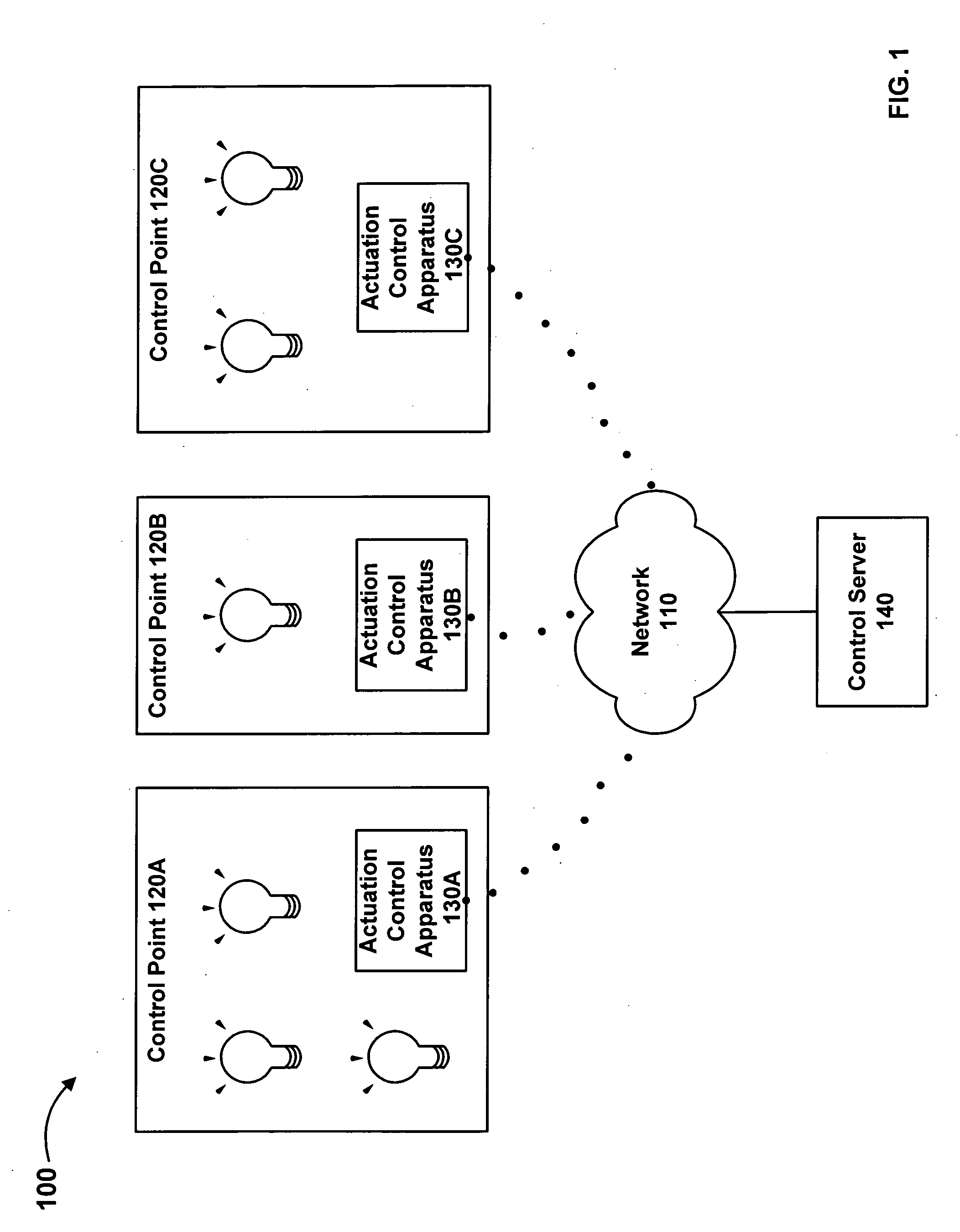Distributed intelligence in lighting control
a technology of distributed intelligence and lighting control, applied in the field of facilities management, can solve the problems of complex centralized control of facilities system having multiple devices, difficult and/or costly retrofitting of large areas with centralized control systems, and difficulty in implementing and inefficiency
- Summary
- Abstract
- Description
- Claims
- Application Information
AI Technical Summary
Benefits of technology
Problems solved by technology
Method used
Image
Examples
Embodiment Construction
[0017]Embodiments of the present invention comprise systems, methods, and apparatuses for distributed intelligence in control of lighting systems. A facilities lighting system may be organized into multiple control areas. A control area can include a component device or series of component devices in the facilities system. In a lighting system, for example, a control area can include a single light fixture or a group of light fixtures. Each control area is associated with an actuation control apparatus, which determines instructions for the operation of each control area based on various types of signal information and controls operation of the control area based on the determined instructions.
[0018]FIG. 1 illustrates an exemplary implementation of an environment 100 providing distributed intelligence in facilities control. Implemented on a communications network 110, environment 100 may include multiple actuation control apparatuses 130A-130C, and a control server 140. Each of the ...
PUM
 Login to View More
Login to View More Abstract
Description
Claims
Application Information
 Login to View More
Login to View More - R&D
- Intellectual Property
- Life Sciences
- Materials
- Tech Scout
- Unparalleled Data Quality
- Higher Quality Content
- 60% Fewer Hallucinations
Browse by: Latest US Patents, China's latest patents, Technical Efficacy Thesaurus, Application Domain, Technology Topic, Popular Technical Reports.
© 2025 PatSnap. All rights reserved.Legal|Privacy policy|Modern Slavery Act Transparency Statement|Sitemap|About US| Contact US: help@patsnap.com



